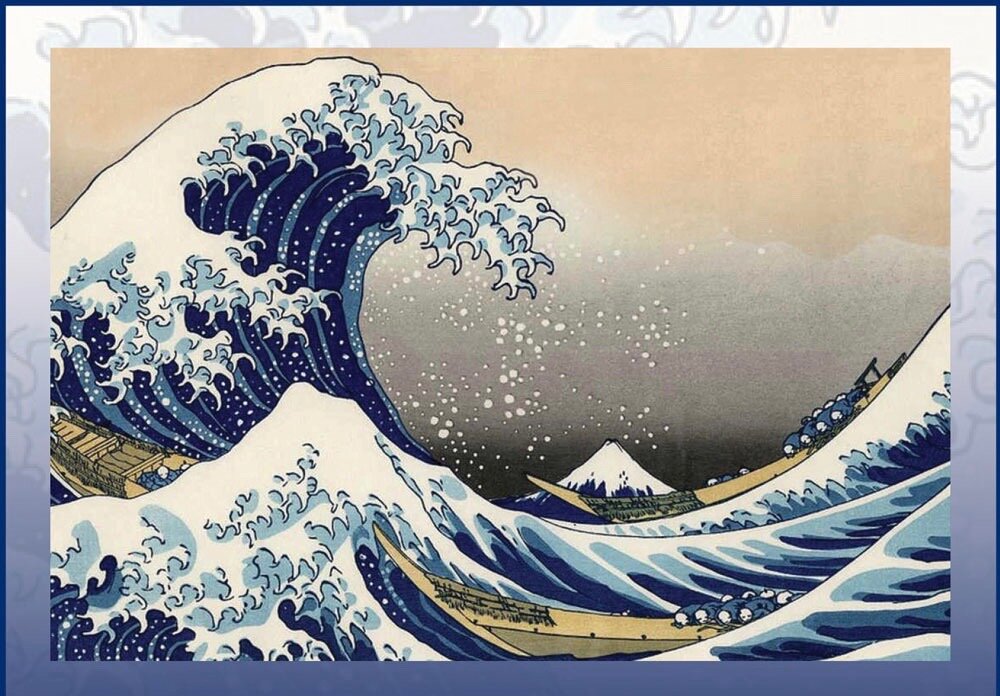The Third Foundation of Mindfulness introduces us to the investigation of mind - generally taught in meditation classes as thoughts and emotions. It is devilishly hard to turn mindfulness on thoughts and emotions and keep it there. The mind is quicksilver and slippery to the extent that bringing the full force of mindfulness here is quite challenging. Why? Because we find our thoughts and emotions endlessly compelling. This tendency has good survival value in that those who started investigating terror with mindfulness instead of running when confronted with a tiger were probably not our ancestors.
Nevertheless, there are plenty of emotions that arise that are not directly related to our survival in this moment. But they are relevant to whether we are suffering and therefore worthy of mindful investigation. So the first step in Mindfulness of Mind is to begin to see what is there, in the mind, in this moment. Is there fatigue or energy? Is the mind bright or dull? What are you thinking about - right now? As you read this, there is the meaning of the words, but there are also associations and interpretations, “this reminds me..” kind of thoughts, “I don’t have time to finish this right now” thoughts. Is there excitement or recognition? Or is there boredom or impatience? Is there distraction?
But The Third Foundation of Mindfulness is invites us to look underneath the story line, the mental conversations, the pull of images and memories, imaginings about the future to discern what is the motivating force of the mental stream. As I mentioned last week it invites us to know if greed, hatred, delusion, or distraction are present. And when they are absent. Greed has a wider meaning which includes lust, craving, or wanting. Hatred includes aversion, fear, and not wanting in its definition.
The first three qualities - greed, hatred, and delusion - are key to the Buddhist teachings; freedom from their hold over us is liberation or enlightenment.
In the age before writing, the Buddha was a big fan of lists. And numbers. The Four Noble Truths. The Eight fold Path. The Triple Gems also known as the Three Refuges. Here we have the Three Poisons - sometimes also referred to as the Three Defilements. In Tricycle Magazine "What did the Buddha teach?”, this is how there are introduced:
"In his early teachings, the Buddha identified “three poisons,” or three fires, or three negative qualities of the mind that cause most of our problems—and most of the problems in the world. The three poisons are: greed (raga, also translated as lust), hatred (dvesha, or anger), and delusion (moha, or ignorance). The three poisons are opposed by three wholesome, or positive attitudes essential to liberation: generosity (dana), lovingkindness (maitri, Pali: metta), and wisdom (prajna). Buddhist practice is directed toward the cultivation of these virtues and the reduction or destruction of the poisons; practitioners identify those thoughts that give rise to the three poisons and don’t dwell on them, while nurturing the thoughts that give rise to the three positive attitudes.” https://tricycle.org/beginners/buddhism/three-poisons/
The final sentence "practitioners identify those thoughts that give rise to the three poisons and don’t dwell on them, while nurturing the thoughts that give rise to the three positive attitudes” is the purview of the third foundation of mindfulness. Mindfulness of mind is the process of bringing awareness to our thoughts and identifying thoughts which give rise to the poisons as well as thoughts that support the wholesome attitudes.
In a related article, Tricycle Editors write the following:
The first of the Three Defilements, Greed, drives us to cling to or hoard the things we want, and hate drives us to avoid and resist what we don’t want. Delusion is the folly of thinking we can get what we want to the exclusion of what we don’t want. It’s an attempt to split up circumstances into categories of our own devising. But reality is not divisible in that way, and the irony of such a delusion resides in a failure to recognize that greed and hate are psychologically one and the same.
My clinging to something I want is always in resistance to something I don’t want. My resistance to something I don’t want resides in my preference for something I do want. It’s a situation that leaves me pushing and pulling simultaneously, a matter of considerable strain. When I put myself at odds with circumstance, I’m certain to suffer just as the Buddha said I would. The tug of war set up between clinging and aversion nullifies the effective force of either. The resulting lack of inclusive receptiveness has the effect of shutting down the whole system of human exchange, confining me within my own likes and dislikes. https://tricycle.org/magazine/three-defilements/
(I have included the article in a PDF below. It’s valuable reading.)
We can start with craving or greed. What does it feel like? When does it arise? Can we learn to recognize it? One exercise I wrote about last week suggested by Donald Rothberg is to do walking meditation in the aisles of Bed, Bath, and Beyond. If Whole Foods is closer, try that. Or Pottery Barn. What’s your favorite store? Do you feel wanting arising just thinking about which store you enjoy the most?
Do walking meditation through the rooms of your house and see if you can feel the pulling in of greed. You might also experience the pushing away of aversion. The kitchen is a great place to feel wanting. Any piles of bills or unsorted papers or muss might trigger aversion or not wanting. Stop and notice how this craving and aversion feels in the body, in the mind, how it manifests as thoughts.
Getting to know wanting and not wanting is a great practice.

